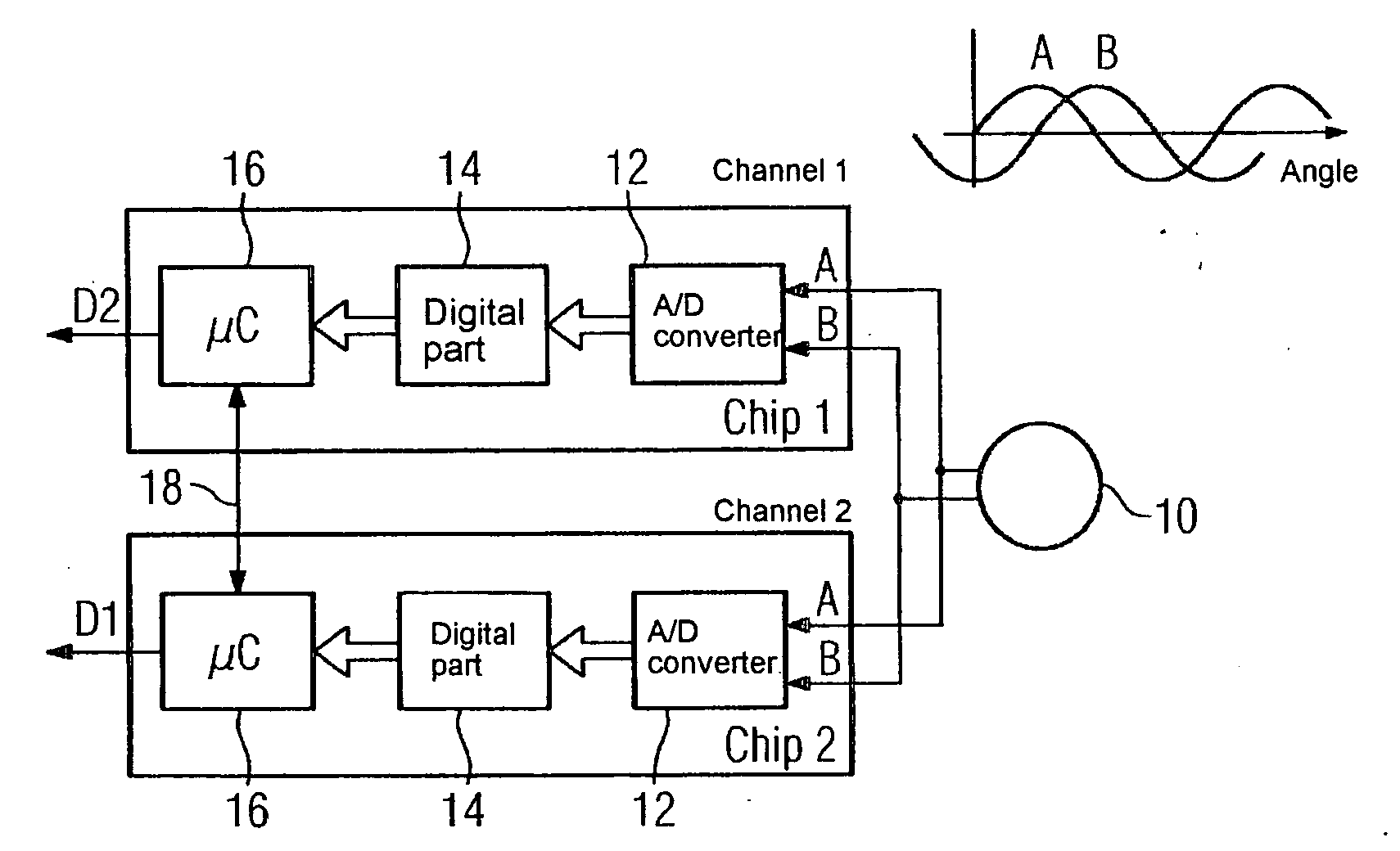Two-Channel Method For Continuously Determining at Least One Output Signal From Changing Input Signals
a two-channel method and input signal technology, applied in the field of signal evaluation, can solve the problems of two different chips, two different chips, and very high interference risk of cited electronic circuitry
- Summary
- Abstract
- Description
- Claims
- Application Information
AI Technical Summary
Benefits of technology
Problems solved by technology
Method used
Image
Examples
Embodiment Construction
[0027]A transmitter 10, which can be an optical or a magnetic transmitter, feeds out the sinusoidal signal A and the cosinusoidal signal B as input signals for two channels on two different chips. In each chip an analog-to-digital converter 12 converts the analog signals into digital signals. The signal is further evaluated in a digital part 14 and a downstream microcomputer 16. The number of zero crossings of the sine stands therein for the extent of the rotation of the motor which the transmitter system is observing, and for fine measuring the precise angle of the input signal is determined by calculating the tangential arc from the ratio of the signal A to the signal B. The two microcomputers 16 feed out signals D1 and D2 each representing the position of a tool or work piece. The two signals D1 and D2 are mutually compared via a connecting lead 18, with the comparison preferably being able to take place in both microcomputers 16. If the values D1 and D2 diverge too much, then an...
PUM
 Login to View More
Login to View More Abstract
Description
Claims
Application Information
 Login to View More
Login to View More - R&D
- Intellectual Property
- Life Sciences
- Materials
- Tech Scout
- Unparalleled Data Quality
- Higher Quality Content
- 60% Fewer Hallucinations
Browse by: Latest US Patents, China's latest patents, Technical Efficacy Thesaurus, Application Domain, Technology Topic, Popular Technical Reports.
© 2025 PatSnap. All rights reserved.Legal|Privacy policy|Modern Slavery Act Transparency Statement|Sitemap|About US| Contact US: help@patsnap.com


